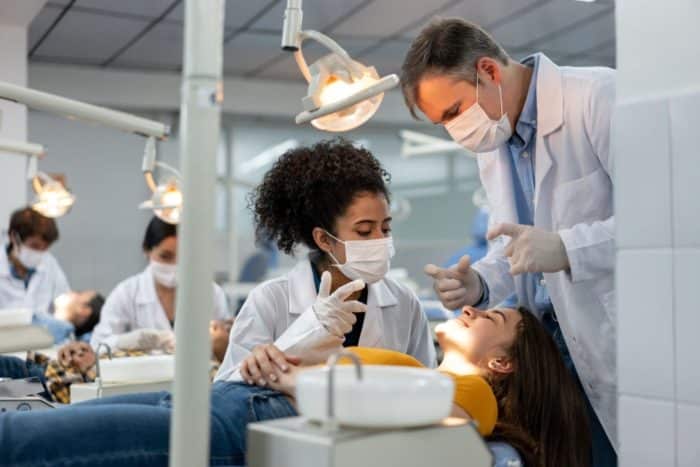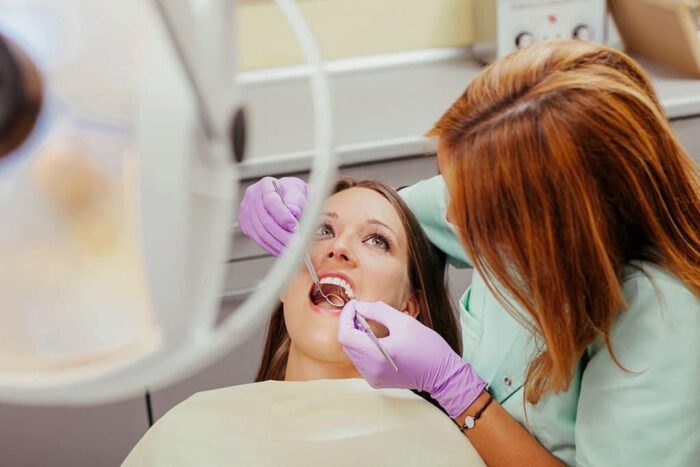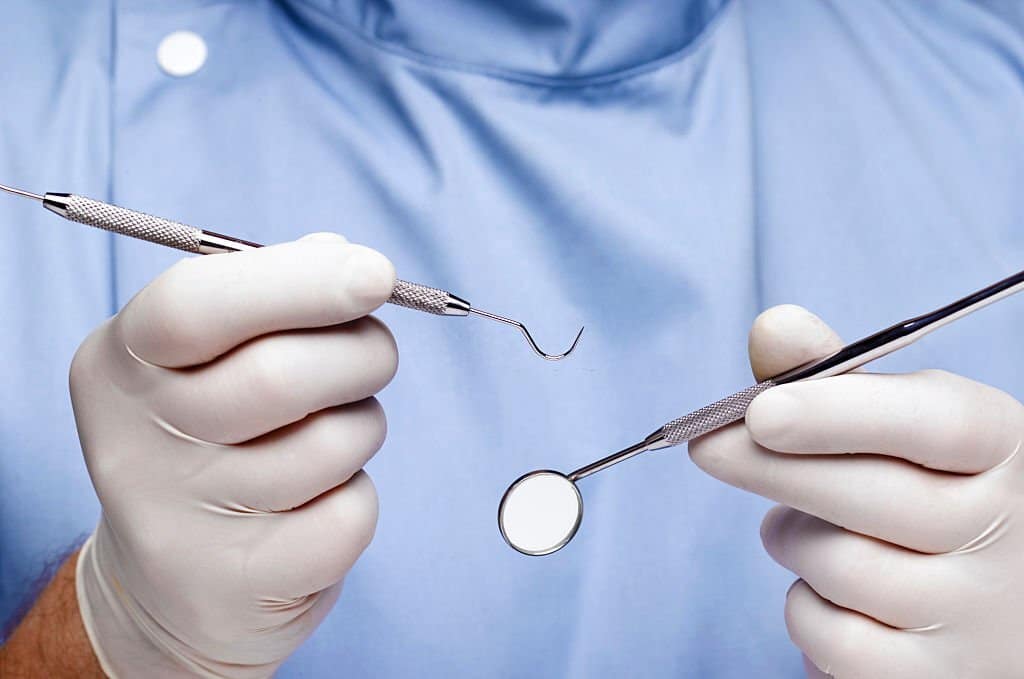Last Updated on August 8, 2023 by Spynaija
Acceptance rates, grade point average (GPA), and the average dental admissions test (DAT) are some of the primary entry requirements to any dental school in the United States and Canada. With thousands of applicants vying for a limited number of spots. But what exactly are dental school acceptance rates, and what factors contribute to them?
In this article, we have provided a comprehensive list of dental school acceptance rates for some of the top-ranking dental schools across the United States and Canada and some valuable tips for improving your chances of getting accepted. Whether you’re just starting to research dental schools or are in the process of applying, this guide will provide valuable insights into one of the most critical aspects of the dental school admissions process. So, let’s get started!
What is the Average GPA for Dental School?
The average GPA for dental schools vary depending on the school and the number of applications they received for that session. In general, dental schools tend to be highly competitive. Some dental schools may have an average GPA of 3.4 or higher for their incoming classes. It’s important to note that GPA is just one factor that dental schools consider when evaluating applicants. Admissions committees also look at other factors such as dental experience, letters of recommendation, and the results of the Dental Admission Test (DAT).
What Percentage of Dental School Applicants are Accepted?
The percentage of dental school applicants who are accepted varies depending on the school and the applicant pool. The acceptance rate for dental schools can range from as low as 1–2% at some schools to as high as 50% at others. Also, the acceptance rate is just one factor to consider when evaluating dental schools. You should also consider the reputation of the school and the quality of the program and find out if it offers the training and opportunities that you are looking for in dental education.
What is the Dental Admissions Test (DAT)?
The Dental Admissions Test (DAT) is an assessment test required by all dental schools in the US to determine the academic capacity of their prospective students’ potential for survival in dental school. This is always a content-based test, so applicants are expected to have taken the basic courses, which include general biology, general chemistry, and organic chemistry, prior to taking this examination.
The test is entirely multiple-choice, and it takes about 4 hours and 15 minutes for administration. The test consists of four (4) separate examinations of roughly equal weight that cover the following:
- Survey of natural sciences: covers content related to general biology, general chemistry, and organic chemistry.
- Perceptual ability test (PAT): this test tests your problem-solving prowess. It requires you to solve problems in 2 and 3 dimensions.
- Reading comprehension: topics for this are taken from dental and basic sciences.
- Quantitative reasoning: this involves algebra and numerical calculations and conversions. Calculators are not allowed for this section.
If you’re interested in taking this test, you must register through the American Dental Association. Upon completion of registration, you will receive a formal authorization letter, the content of which includes the time in which you will be taking the test.
List of Dental School Acceptance Rates in the US
Below is a list of all the dental school acceptance rates in the US, the average GPA, and the DAT of the various institutions.
| Institution | Acceptance Rates | Average GPA | Average DAT |
| Arizona School of Dentistry & Oral Health | 2.2% | 3.4 | 19.0 |
| Augusta University | 10% | 3.6 | 19.0 |
| Boston University | 2.5% | 3.4 | 20.0 |
| Case Western Reserve University | 2.67% | 3.6 | 19.6 |
| Columbia University | 3.33% | 3.5 | 22.4 |
| Creighton University | 3.4% | 3.6 | 19.3 |
| East Carolina University | 13.75% | 3.4 | 18.0 |
| Harvard University | 3.18% | 3.8 | 23.0 |
| Herman Ostrow School of Dentistry | 4.26% | 3.5 | 20.0 |
| Howard University | 3.75% | 3.2 | 17.4 |
| Indiana University | 7% | 3.5 | 19.1 |
| LSU Health Sciences Center | 9.28% | 3.6 | 19.0 |
| Lake Erie College of Osteopathic Medicine (LECOM) | 5% | 3.74 | 21.0 |
| Loma Linda University | 4.75% | 3.3 | 19.9 |
| Marquette University | 4% | 3.6 | 20.0 |
| Medical University of South Carolina | 7.89% | 3.6 | 20.0 |
| Meharry Medical College | 3.4% | 3.2 | 17.0 |
| Midwestern University – AZ | 4.6% | 3.6 | 19.0 |
| Midwestern University – IL | 4.48% | 3.4 | 19.0 |
| Missouri School of Dentistry & Oral Health | 4.5% | 3.4 | 18.0 |
| New York University | 7.4% | 3.5 | 21.0 |
| Nova Southeastern University | 4% | 3.67 | 20.0 |
| Ohio State University | 11% | 3.7 | 20.5 |
| Oregon Health & Science University | 5.7% | 3.7 | 20.0 |
| Roseman University of Health Sciences | 4% | 3.3 | 20.0 |
| Rutgers School of Dental Medicine | 4.5% | 3.5 | 20.4 |
| Southern Illinois University | 8.3% | 3.7 | 19.0 |
| Stony Brook University | 3.07% | 3.5 | 21.0 |
| Temple University | 3.47% | 3.5 | 20.0 |
| Texas A&M University | 5.88% | 3.6 | 20.0 |
| Touro College of Dental Medicine | 5.23% | 3.5 | 20.0 |
| Tufts University | 2.1% | 3.4 | 20.0 |
| UT Health San Antonio | 6.6% | NA | 20.0 |
| University at Buffalo, School of Dental Medicine | 5% | 3.5 | 20.0 |
| University of Alabama, Birmingham | 8.66% | 3.7 | 20.0 |
| University of California, Los Angeles | 4.5% | 3.7 | 22.0 |
| University of California, San Francisco | 4.7% | 3.5 | 21.0 |
| University of Colorado | 5.33% | 3.6 | 20.0 |
| University of Connecticut | 3.2% | 3.6 | 20.7 |
| University of Detroit – Mercy | 8.05% | 3.7 | 21.0 |
| University of Florida | 6.33% | 3.7 | 20.0 |
| University of Illinois, Chicago | 3.33% | 3.47 | 19.8 |
| University of Iowa | 8% | 3.8 | 20.0 |
| University of Kentucky | 3.6% | 3.5 | 19.0 |
| University of Louisville | 4% | 3.5 | 19.0 |
| University of Maryland | 4.6% | 3.5 | 20.4 |
| University of Michigan | 5.25% | 3.6 | 20.0 |
| University of Minnesota | 9.16% | 3.6 | 20.4 |
| University of Mississippi | 31.81% | 3.7 | 18.0 |
| University of Missouri, Kansas City | 11.57% | 3.6 | 19.0 |
| The University of Nebraska Medical Center | 6.25% | 3.8 | 19.0 |
| University of Nevada, Las Vegas | 3.86% | 3.4 | 20.1 |
| University of New England | 5.41% | 3.4 | 18.0 |
| University of North Carolina | 5.33% | 3.5 | 21.0 |
| University of Oklahoma | 8% | 3.6 | 20.3 |
| University of Pennsylvania | 5% | 3.7 | 21.0 |
| University of Pittsburgh | 3.8% | 3.6 | 20.1 |
| University of Puerto Rico | 10% | 3.5 | 17.0 |
| The University of Tennessee Health Science Center | 7.2% | 3.6 | 20.0 |
| The University of Texas at Houston | 6.6% | 3.7 | 19.6 |
| University of Utah | 2.5% | 3.8 | 21.0 |
| University of Washington | 6.13% | 3.7 | 21.0 |
| University of the Pacific | 5.1% | 3.6 | 22.0 |
| Virginia Commonwealth University | 4% | 3.6 | 20.0 |
| West Virginia University | 5% | 3.5 | 18.0 |
| Western University of Health Sciences | 2.54% | 3.3 | 20.0 |
Recommended Topics:
- Dental schools that accept transfer students in 2023
- Best DAT Prep Books in 2023
- Dental School Rankings in 2023
- Best Dental Schools in California | Acceptance rates, Average GPAs & DAT
- Best Dental Schools For Out Of State Students
- College Transfer Acceptance Rates in 2023
- Easiest Medical Schools To Get Into In California
- Easiest Medical Schools To Get Into
Conclusion
Above, we provided a table that includes a list of all the dental school acceptance rates, the average GPA, and the DAT of the various institutions. However, while we have made every effort to provide accurate information, please keep in mind that admission statistics and data are dynamic. Therefore, we always encourage you to verify these details with the official school admissions office.
Has this article provided an answer or answers to your query? If yes, leave a comment in the comment box to express your satisfaction or ask any question you have, and we will reply to you as soon as possible.
If you think this post might be useful for others, please kindly share it on Twitter, Facebook, or WhatsApp, or send an email to friends. There are buttons available for that below, and they are very easy to use!









